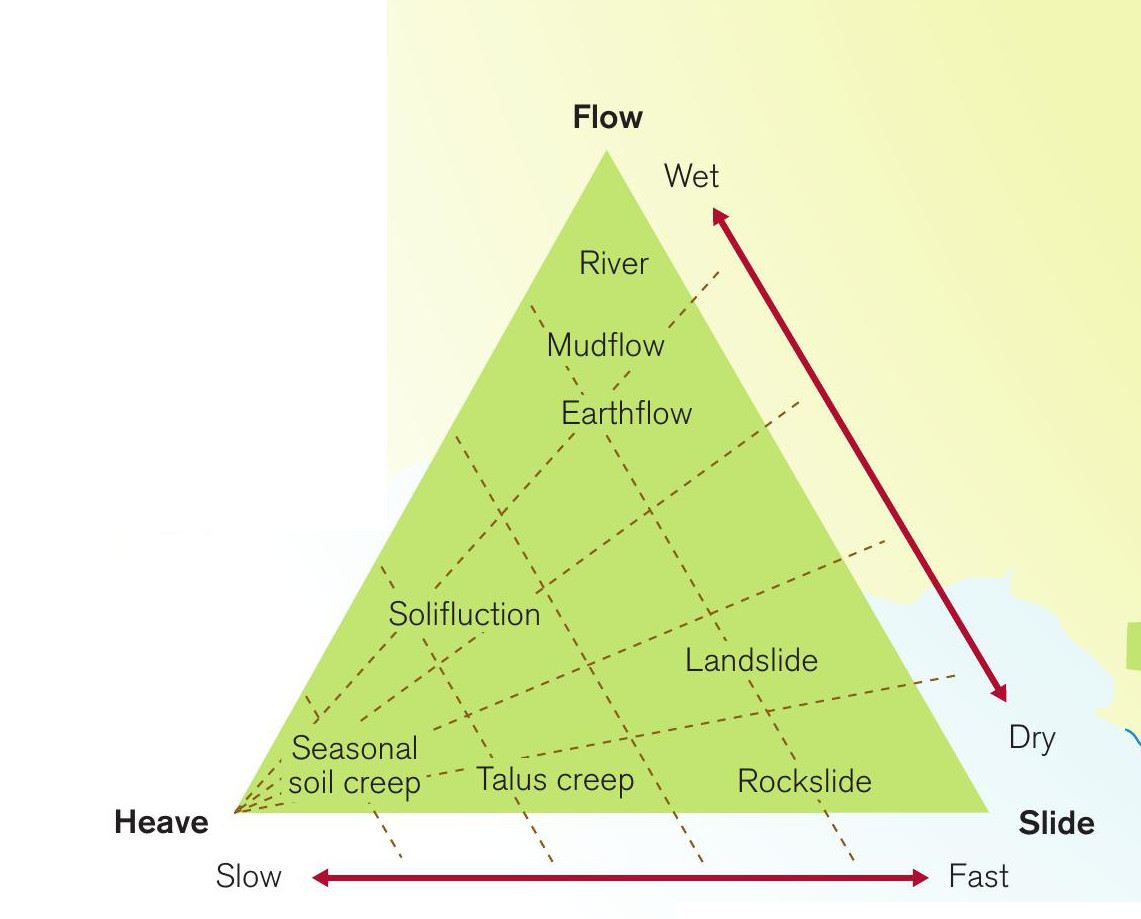
Mass movements are defined as the downhill movement of soil and rock under the influence of gravity, often in the presence of water. Rates of movement vary from very slow in the case of soil creep (mm y-1) to very fast in the case of rock falls (m s-1). Frequency also varies. Soil creep, for example, occurs more or less continuously (photograph A) while major mass-movement events (rock falls and landslides) may occur once in 100 years, or even less frequently. Most classifications of mass movement are based on a combination of factors including how fast or slow the movement is and how wet or dry the material is (Figure 1).
Many of the mass-movement phenomena shown in Figure 1 can be seen acting on the ‘Jurassic’ coast of west Dorset and east Devon (Figure 2). These events have human and economic impacts of varying significance as well as short-term and long-term physical effects.
Your organisation does not have access to this article.
Sign up today to give your students the edge they need to achieve their best grades with subject expertise
Subscribe




